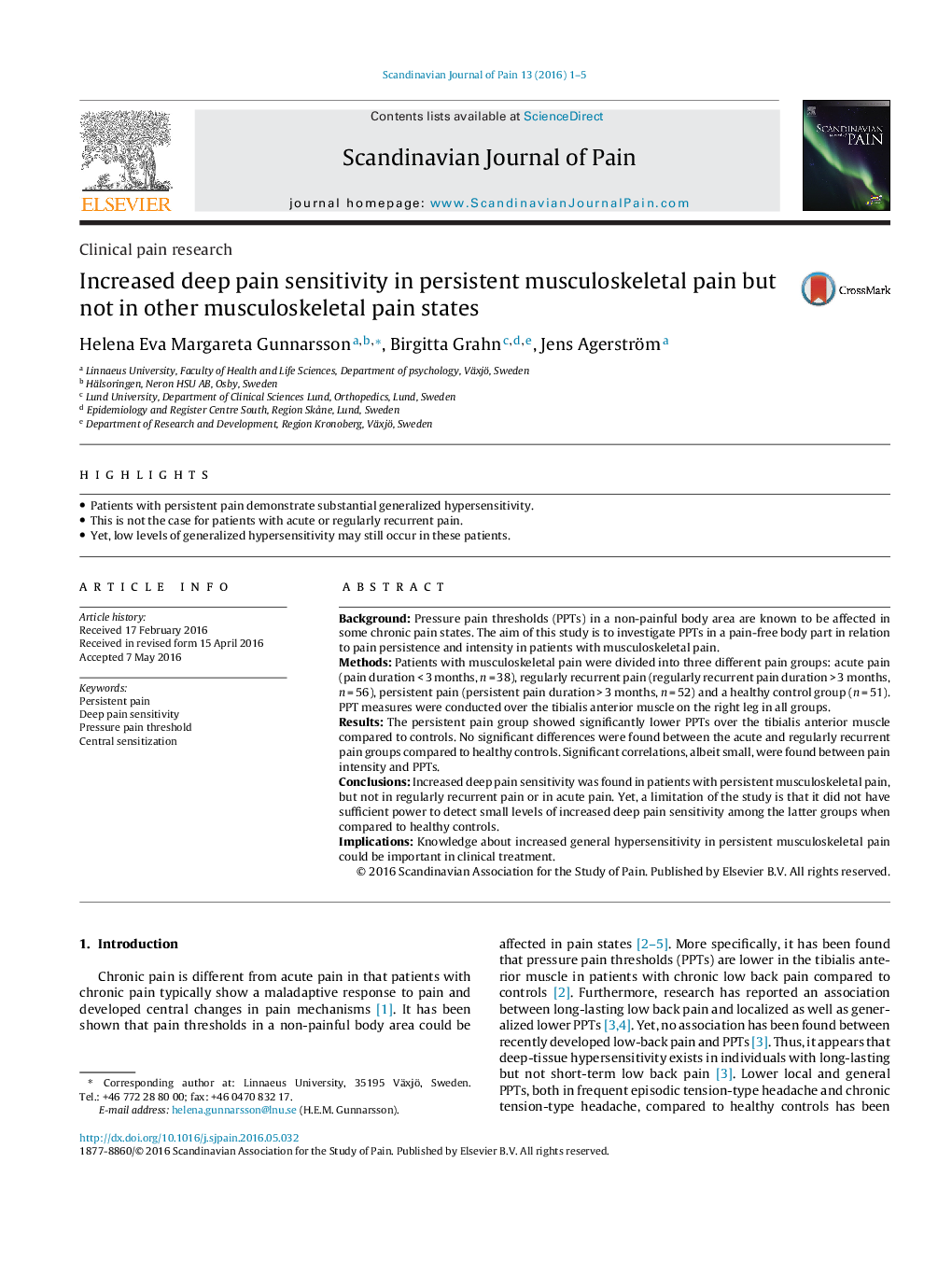| Article ID | Journal | Published Year | Pages | File Type |
|---|---|---|---|---|
| 2770650 | Scandinavian Journal of Pain | 2016 | 5 Pages |
•Patients with persistent pain demonstrate substantial generalized hypersensitivity.•This is not the case for patients with acute or regularly recurrent pain.•Yet, low levels of generalized hypersensitivity may still occur in these patients.
BackgroundPressure pain thresholds (PPTs) in a non-painful body area are known to be affected in some chronic pain states. The aim of this study is to investigate PPTs in a pain-free body part in relation to pain persistence and intensity in patients with musculoskeletal pain.MethodsPatients with musculoskeletal pain were divided into three different pain groups: acute pain (pain duration < 3 months, n = 38), regularly recurrent pain (regularly recurrent pain duration > 3 months, n = 56), persistent pain (persistent pain duration > 3 months, n = 52) and a healthy control group (n = 51). PPT measures were conducted over the tibialis anterior muscle on the right leg in all groups.ResultsThe persistent pain group showed significantly lower PPTs over the tibialis anterior muscle compared to controls. No significant differences were found between the acute and regularly recurrent pain groups compared to healthy controls. Significant correlations, albeit small, were found between pain intensity and PPTs.ConclusionsIncreased deep pain sensitivity was found in patients with persistent musculoskeletal pain, but not in regularly recurrent pain or in acute pain. Yet, a limitation of the study is that it did not have sufficient power to detect small levels of increased deep pain sensitivity among the latter groups when compared to healthy controls.ImplicationsKnowledge about increased general hypersensitivity in persistent musculoskeletal pain could be important in clinical treatment.
